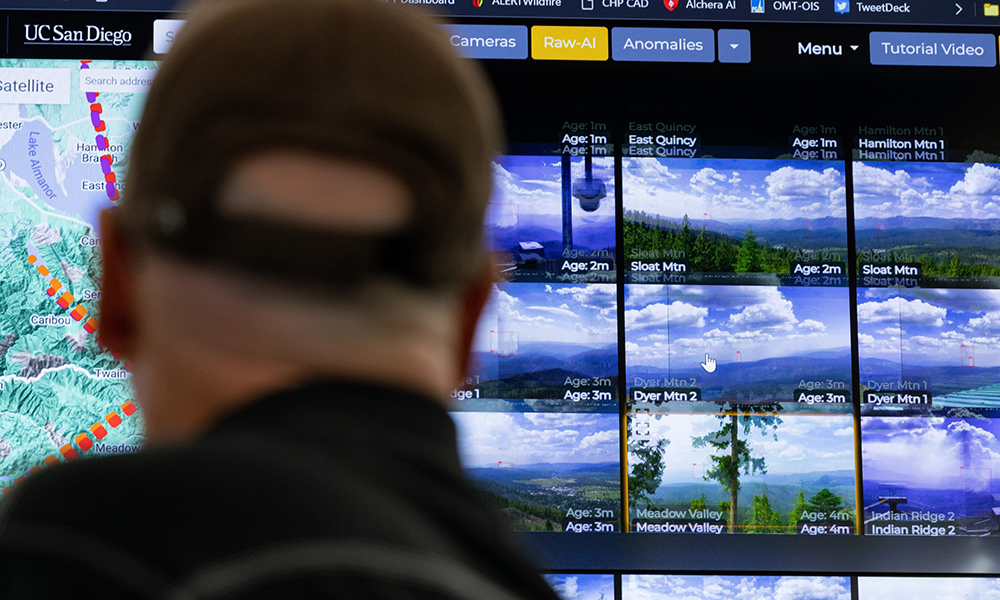
为了实现《巴黎协定》的目标,到2030年全世界必须大幅减少温室气体排放。但按照当前的排放轨迹,未来八年,全球排放量将增加10%。这只会使世界各地的大范围干旱、洪水、极端高温和其他毁灭性影响进一步恶化。
在这种极具挑战性的背景下,显然必须加快各方面的气候行动。其中一个机会就是人工智能(AI)。研究显示,AI可以推广目前经过验证的应用和技术,到2030年有望将全球温室气体排放量减少5%至10%,相当于欧盟的年度总排放量。第28届联合国气候变化大会(COP28)首次将AI作为应对气候变化的关键潜在解决方案之一,《联合国气候变化框架公约》(United Nations Framework Convention on Climate Change ,UNFCCC)在会上宣布发起AI创新大挑战,用于发现和支持发展中国家执行气候行动的AI驱动解决方案。
扭转排放轨迹,需要从政府官员、商界领袖到技术专家,所有人积极参与,朝着共同的方向努力。政策制定者们要扮演关键角色,有三个关键优先领域将支持AI充分发挥潜力。
首先,政策必须支持AI创新,并用于气候积极应用。为了推动AI的发展和部署,需要通过数据共享框架、研发投资、可负担的技术获取途径和教育倡议等措施。政府作为最终用户,将发挥关键作用。如果社区、国家或行业没有明确的气候行动目标,AI驱动的创新可能会各自为政。资源分配将变得效率低下。确定AI能够最直接有效地推动气候行动的优先创新领域,例如利用AI抗洪水农业种植、气候变化调适和加快能源转型等,能够释放更多资源,集思广益。
其次,政策制定者可以优先考虑具有高潜力的使用案例,将效率和优化要求纳入行业法规,从而加快实现AI的气候影响。航空、制造、发电和建筑等高排放行业现有的工艺和传统基础设施,使用AI能够更快完成优化,而不是彻底重建,因为重建要耗费大量成本和时间。长期转型投资依旧不可或缺,但同时应该鼓励更直接的影响。
第三,政策制定者可以帮助确保AI发展所需要的算力,以零碳能源驱动,例如,通过使用AI支持的更完善的负荷管理改善电网等。
AI对人类合作应对气候变化至关重要。AI已经发挥了推动作用,例如AI正在帮助个人获得更好的、更可行的信息,帮助企业优化运营,帮助政府和其他组织改善预测。
德国《能源效率法案》(Energy Efficiency Act)规定,数据中心必须购买可再生能源,并强制重复使用数据中心产生的热能。
新加坡利用AI预测洪水,测试抗洪水基础设施。里斯本市使用AI统计现有的太阳能面板库存,并评估扩建潜力。AI收集的数据被用于预测可再生能源供应,进而指导建筑法规和激励性预算的制定。菲律宾鼓励使用AI应对气候变化适应领域的挑战和降低灾害风险。
全球的政策制定者都致力于推动以负责任的方式发展AI,这一点至关重要。但他们也必须有利用AI的潜力解决重大挑战的政策议程,如气候变化挑战。通过明智的政策决策发展AI技术,可能是我们目前能采取的最具有影响力的气候行动,而且可以为我们实现在这个十年大幅减少排放的目标奠定重要的基础。
本文作者凯特·布兰特现任谷歌(Google)首席可持续发展官。她之前曾任职于白宫,担任美国首位联邦首席可持续发展官、能源部高级顾问和海军部长能源顾问。
里奇·莱塞尔现任波士顿咨询集团(Boston Consulting Group,BCG)的全球董事长。他还担任世界经济论坛(World Economic Forum)首席执行官气候领袖联盟(Alliance of CEO Climate Leaders)首席顾问。
《财富》杂志发表的其他必读评论文章:
• 对2023年美国经济衰退的悲观预测失败。他们为什么看好2024年?
• 研究发现,新冠仍是更严重的威胁,但流感也不容忽视
• 使用现代炉灶可能改变非洲的经济发展格局,且有助于减少排放,相当于全球飞机和船舶的排放量
• 美国正在破坏由它自己主导的世界数字贸易秩序(财富中文网)
Fortune.com上发表的评论文章中表达的观点,仅代表作者本人的观点,不能代表《财富》杂志的观点和立场。
翻译:刘进龙
审校:汪皓
为了实现《巴黎协定》的目标,到2030年全世界必须大幅减少温室气体排放。但按照当前的排放轨迹,未来八年,全球排放量将增加10%。这只会使世界各地的大范围干旱、洪水、极端高温和其他毁灭性影响进一步恶化。
在这种极具挑战性的背景下,显然必须加快各方面的气候行动。其中一个机会就是人工智能(AI)。研究显示,AI可以推广目前经过验证的应用和技术,到2030年有望将全球温室气体排放量减少5%至10%,相当于欧盟的年度总排放量。第28届联合国气候变化大会(COP28)首次将AI作为应对气候变化的关键潜在解决方案之一,《联合国气候变化框架公约》(United Nations Framework Convention on Climate Change ,UNFCCC)在会上宣布发起AI创新大挑战,用于发现和支持发展中国家执行气候行动的AI驱动解决方案。
扭转排放轨迹,需要从政府官员、商界领袖到技术专家,所有人积极参与,朝着共同的方向努力。政策制定者们要扮演关键角色,有三个关键优先领域将支持AI充分发挥潜力。
首先,政策必须支持AI创新,并用于气候积极应用。为了推动AI的发展和部署,需要通过数据共享框架、研发投资、可负担的技术获取途径和教育倡议等措施。政府作为最终用户,将发挥关键作用。如果社区、国家或行业没有明确的气候行动目标,AI驱动的创新可能会各自为政。资源分配将变得效率低下。确定AI能够最直接有效地推动气候行动的优先创新领域,例如利用AI抗洪水农业种植、气候变化调适和加快能源转型等,能够释放更多资源,集思广益。
其次,政策制定者可以优先考虑具有高潜力的使用案例,将效率和优化要求纳入行业法规,从而加快实现AI的气候影响。航空、制造、发电和建筑等高排放行业现有的工艺和传统基础设施,使用AI能够更快完成优化,而不是彻底重建,因为重建要耗费大量成本和时间。长期转型投资依旧不可或缺,但同时应该鼓励更直接的影响。
第三,政策制定者可以帮助确保AI发展所需要的算力,以零碳能源驱动,例如,通过使用AI支持的更完善的负荷管理改善电网等。
AI对人类合作应对气候变化至关重要。AI已经发挥了推动作用,例如AI正在帮助个人获得更好的、更可行的信息,帮助企业优化运营,帮助政府和其他组织改善预测。
德国《能源效率法案》(Energy Efficiency Act)规定,数据中心必须购买可再生能源,并强制重复使用数据中心产生的热能。
新加坡利用AI预测洪水,测试抗洪水基础设施。里斯本市使用AI统计现有的太阳能面板库存,并评估扩建潜力。AI收集的数据被用于预测可再生能源供应,进而指导建筑法规和激励性预算的制定。菲律宾鼓励使用AI应对气候变化适应领域的挑战和降低灾害风险。
全球的政策制定者都致力于推动以负责任的方式发展AI,这一点至关重要。但他们也必须有利用AI的潜力解决重大挑战的政策议程,如气候变化挑战。通过明智的政策决策发展AI技术,可能是我们目前能采取的最具有影响力的气候行动,而且可以为我们实现在这个十年大幅减少排放的目标奠定重要的基础。
本文作者凯特·布兰特现任谷歌(Google)首席可持续发展官。她之前曾任职于白宫,担任美国首位联邦首席可持续发展官、能源部高级顾问和海军部长能源顾问。
里奇·莱塞尔现任波士顿咨询集团(Boston Consulting Group,BCG)的全球董事长。他还担任世界经济论坛(World Economic Forum)首席执行官气候领袖联盟(Alliance of CEO Climate Leaders)首席顾问。
《财富》杂志发表的其他必读评论文章:
• 对2023年美国经济衰退的悲观预测失败。他们为什么看好2024年?
• 研究发现,新冠仍是更严重的威胁,但流感也不容忽视
• 使用现代炉灶可能改变非洲的经济发展格局,且有助于减少排放,相当于全球飞机和船舶的排放量
• 美国正在破坏由它自己主导的世界数字贸易秩序(财富中文网)
Fortune.com上发表的评论文章中表达的观点,仅代表作者本人的观点,不能代表《财富》杂志的观点和立场。
翻译:刘进龙
审校:汪皓
The world must dramatically reduce greenhouse gas emissions by 2030 to meet Paris Agreement goals. Yet based on current trajectories, emissions are set to rise by 10% over the next eight years. This will only accelerate widespread droughts, flooding, extreme heat, and other devastating impacts across the globe.
Against this challenging backdrop, it is clear that acceleration is needed across all fronts of climate action. One of those opportunities lies in artificial intelligence (AI). Research shows that by scaling currently proven applications and technology, AI could mitigate 5 to 10% of global greenhouse gas emissions by 2030–the equivalent of the total annual emissions of the European Union. For the first time, AI was highlighted at COP28 as one of the key potential solutions to tackle climate change, with the United Nations Framework Convention on Climate Change (UNFCCC) announcing the AI Innovation Grand Challenge at the conference to identify and support the development of AI-powered solutions for climate action in developing countries.
Reversing the emissions trajectory will take everyone involved–government officials, business leaders, and technologists–all rowing the boat in the same direction. Policymakers have a central role to play, with three critical priority areas that will allow AI to contribute to its full potential.
First, policies must enable AI innovation and adoption for climate-positive applications. Data sharing frameworks, investment in research, affordable technology access, and education initiatives are needed to drive development and deployment. Government has a key role to play as an end-user. In the absence of clear community, national, or sector-specific objectives for climate action, AI-driven innovation could go off in disjointed directions. Resource allocation would be inefficient. Establishing priority innovation domains where AI could most immediately and effectively advance climate action–such as leveraging AI for flood-resilient farming, climate change adaptation, and accelerating the energy transition–can unlock resources and focus minds.
Second, policymakers should accelerate AI’s climate impact by prioritizing high-potential use cases and embedding efficiency and optimization requirements into industrial regulation. Existing processes and legacy infrastructure in high-emission sectors like aviation, manufacturing, electricity production, and construction, could be more immediately optimized with AI, not just with wholesale reconstruction, which could be costly and take too much time. Long-term transformative investments still need to be made, but more immediate impact should be encouraged.
Third, policymakers can help ensure that the computing resources needed for AI advances are powered by carbon-free energy–for example, through improvements to electricity grids like better load management which AI can enable.
AI can be critical in our collective effort to tackle climate change. AI is already driving progress by helping individuals get better and more actionable information, businesses optimize their operations, and governments and other organizations improve prediction and forecasting.
Germany’s Energy Efficiency Act includes specific regulations requiring data centers to purchase renewable energy and mandates the reuse of the heat they generate.
Singapore is using AI to predict floods and test flood-resilient infrastructure. The city of Lisbon is utilizing AI to map its current inventory of solar panels and assess expansion potential. The data collected is then used to develop forecasts for renewable energy supply, which in turn informs building codes and incentive budgets. The Philippines is advocating using AI to tackle climate change adaptation challenges and disaster risk reduction.
Policymakers globally have been focused on promoting the responsible development of AI–which is critical. But they must also pursue a policy agenda to harness AI’s potential to solve big challenges like climate change. Enabling this technology through smart policy decisions may prove one of the most impactful climate actions we can take today–and would provide a vital down payment on goals to significantly reduce emissions during this decade.
Kate Brandt is the chief sustainability officer at Google. She previously served in the White House as the US’s first Federal Chief Sustainability Office, Senior Advisor at the Department of Energy, and Energy Advisor to the Secretary of the Navy.
Rich Lesser is the global chair at Boston Consulting Group (BCG). He also serves as chief advisor to the World Economic Forum Alliance of CEO Climate Leaders.
More must-read commentary published by Fortune:
• Economic pessimists’ bet on a 2023 recession failed. Why are they doubling down in 2024?
• COVID-19 v. Flu: A ‘much more serious threat,’ new study into long-term risks concludes
• Access to modern stoves could be a game-changer for Africa’s economic development–and help cut the equivalent of the carbon dioxide emitted by the world’s planes and ships
• The U.S.-led digital trade world order is under attack–by the U.S.
The opinions expressed in Fortune.com commentary pieces are solely the views of their authors and do not necessarily reflect the opinions and beliefs of Fortune.






